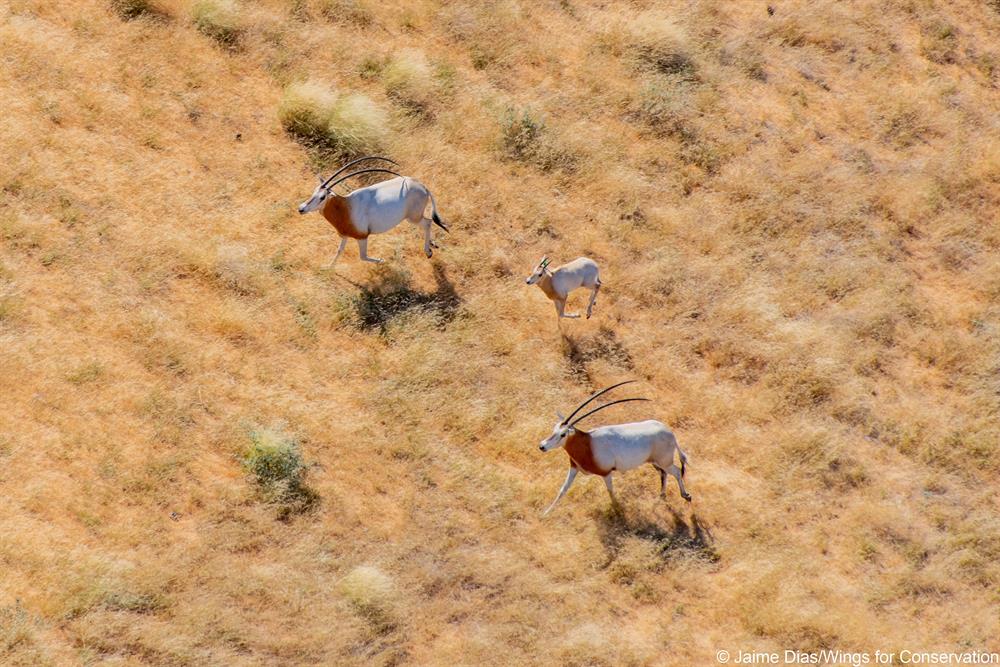The Environment Agency–Abu Dhabi (EAD) continues to progress with the world’s largest mammal reintroduction programme. Last March the Agency successfully translocated 20 Scimitar-Horned Oryx (SHO) and 25 Addax to Chad’s Ouadi Rime-Ouadi Achim Game Reserve.
Currently there are 460 Scimitar-Horned Oryx in the wild, with 15 calves born so far this year, as well as 96 wild Addax, with 5 calves born to the herd, also this year.
Furthermore, for the first time ever, EAD successfully translocated five Dama Gazelle on the 14th of March 2022, which joined the herd of other captured wild Dama Gazelle in the Agency programme.
As part of the monitoring programme for the animals, EAD successfully darted 7 wild animals – 6 SHO and 1 Addax – and fitted them with satellite tracking collars, enabling close monitoring to witness survival and reproduction.
EAD is currently very close to achieving the goal of having a herd of 500 SHO in Chad and, due to the success of this project, they are aiming to go beyond this figure and ensure that the numbers in the wild increase even further. Alongside the SHO herd, EAD is are working closely with the government of Chad to also reintroduce Addax and Dama Gazelles, and in time, hopefully the increased numbers of these species will pave the way for their removal them from the extinction danger list.
The SHO reintroduction programmes strives to create a self-sustaining herd of over 500 heads in the 77,950 km2 Ouadi Rimé-Ouadi Achim Wildlife Reserve, decades after the species was declared ‘extinct in the wild’ by the International Union for the Conservation of Nature (IUCN) in 2000.
Initiated in 2014, with the first shipment of animals released back into their natural habitats in 2016, the herds have been closely monitored to ensure they are adapting well to their wild environment.
The second phase of the reintroduction programme included adding the critically endangered Addax and, in November 2019, the translocation project was launched with the first pilot batch of 15 animals, followed by the second group of 25 Addax in March 2020.
The reintroduction programme of both species involves close collaboration with a range of international partners. These include: the Ministry of Environment in the Government of Chad, the Sahara Conservation Fund (SCF), the Zoological Society of London (ZSL), the Smithsonian Conservation Biology Institute (SCBI), Marwell Wildlife, Royal Zoological Society of Scotland, Saint Louis Zoo WildCare Institute, Fossil Rim Wildlife Center, and the European Union.


